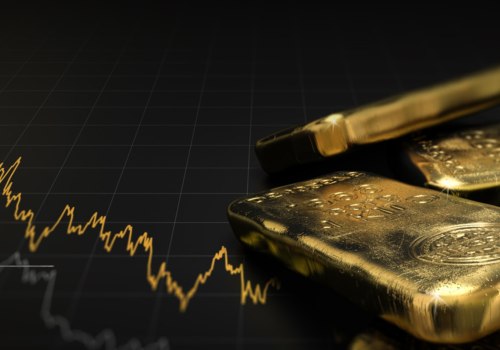Gold stocks are usually more attractive to growth investors than to income investors. Gold stocks generally rise and fall with the price of gold, but there are well-managed mining companies that are profitable even when the price of gold falls. Increases in the price of gold are often magnified in gold stock prices. Founded in 1976, Bankrate has a long history of helping people make smart financial decisions.
We have maintained this reputation for more than four decades by demystifying the financial decision-making process and giving people confidence in the following actions. Gold futures are a good way to speculate on the rise (or fall) in the price of gold, and you could even receive physical delivery of gold, if you want, although physical delivery is not what motivates speculators. The biggest advantage of using futures to invest in gold is the immense amount of leverage you can use. In other words, you can own many gold futures for a relatively small sum of money.
If gold futures move in the direction you think, you can earn a lot of money very quickly. Founded in 1993 by brothers Tom and David Gardner, The Motley Fool helps millions achieve financial freedom through our website, podcasts, books, newspaper columns, radio shows and premium investment services. There are many ways to invest in gold. You can buy physical gold in the form of jewelry, bullion, and coins; buy shares in a gold mining company or other gold-related investment; or buy something that derives its value from gold.
Each method has its advantages and disadvantages. This can make it overwhelming for beginner investors to know the best way to expose themselves to this precious metal. Here's a closer look at these methods of investing in gold. Buying gold jewelry is an indirect way to invest in gold.
However, jewelry tends to have more value to the user than an investment due to the margin of conversion of the precious metal into jewelry and then selling it in the retail market. Expensive gold jewelry can retain its value, although it is often due more to its value as a collector's item than to its gold content. Another disadvantage of jewelry as an investment in gold is the cost of storage and insurance. Nor is it a liquid investment, since you can't easily sell it at market price.
Gold coins have a long history as a currency. Although they are no longer legal tender, gold coins still have value for investors as a store of value. There are costs associated with the purchase, storage and insurance of gold coins, which can affect their performance. In the meantime, they are not very liquid, since you would have to find a collector or other buyer willing to buy the coins from you.
Gold stocks include companies focused on exploration and extraction of gold. They also include gold streaming companies and royalty companies. Gold miners offer investors the biggest upside potential. They can make investments to expand their production (for example,.
They can also pay dividends, providing investors with a gold-driven income stream. Gold stocks are very liquid, as investors can easily buy and sell them in a brokerage account. However, there are risks associated with gold miners. Cost overruns, mismanagement and excessive debt can cause gold mining stocks to outperform the price of gold.
In addition, many extract other materials, including precious metals such as silver or other metals such as copper. While diversification reduces risk, it could dilute the impact of rising gold prices. Meanwhile, gold and royalty transmission companies provide capital to gold miners to develop and expand mines. They receive the right to buy gold at a fixed price (streamers) or a share of gold revenues (royalties), which reduces their risk compared to gold mining stocks.
The longevity of the industry makes this precious metal attractive to many investors. This industry extracts and produces many of the building blocks needed to do the things we use every day. Learn the ins and outs of investing in infrastructure and get the tools you need to add them to your portfolio. Gold certificates are promissory notes issued by a company that prove ownership of the declared amount of gold.
UU. As an equivalent currency, some banks and investment companies still issue gold certificates that give the holder ownership of a portion of their gold holdings. Gold Certificates Give Investors Direct Exposure to Gold Price. However, they are only as secure as the underlying company that issues the certificate.
If the company goes bankrupt, the gold certificate may lose its value. Gold ETFs focus on owning physical gold or shares of gold mining companies, creating different risk profiles. ETF Focused on Holding Physical Gold Bullion Offers Investors Direct Exposure to Gold Price. They tend to match the movement of gold prices relatively well.
However, ETFs have a cost in the form of an ETF expense ratio. However, the cost may be worth it, as gold ETFs are usually the easiest way to invest in gold. Gold stock ETFs and mutual funds typically own shares of several gold miners. Diversification gives investors broad exposure to the gold mining segment, helping to reduce risk.
Gold Stock ETFs and Mutual Funds Offer Investors Advantages Beyond the Price of Gold. However, the disadvantage of gold mining ETFs and mutual funds is that they generally underperform the price of gold. A futures contract gives the holder the right to purchase a specified amount of gold at a future date and price. Option contracts also allow the holder to buy or sell shares of a gold ETF or gold mining stock at a specified price and date.
Contracts move with the underlying price of gold or shares of gold-related capital, giving the investor exposure to gold without owning the underlying investment. One disadvantage of futures and gold options contracts is leverage. Investors don't need to put the full value at the time of purchase. Leverage can increase an investor's profits, but it can also cause losses, especially if the holder does not have enough capital to satisfy the purchase.
Insufficient capital may force investors to sell at a loss rather than buy to sustain a possible future recovery. There are many ways to invest in gold, and each one has its advantages and disadvantages. While investors must weigh each option to determine the best method for their circumstances and risk profile, gold price ETFs and gold streaming and royalty companies tend to be ideal options for beginner gold investors. They offer a lower downside risk compared to other options.
They also tend to match the price performance of gold (or exceed it, in the case of streaming and royalty companies). This helps investors seeking gold security and inflation protection to benefit from a more liquid investment in gold than a physical investment in gold. How is the price of gold determined? Many factors affect the price of gold. These include the demand for metal for jewelry making, for some technological applications and for investment purposes.
Other factors, such as the amount of gold in the central bank's reserves, the value of the U, S. The dollar, and the desire of investors to keep gold as a hedge against inflation or currency devaluation, help boost its price. Many investors see gold as a good hedge against rising prices and a store of value. Historically, it has also been a strong cover in times of financial crisis.
The best times to buy gold are when concerns about inflation or the economic crisis begin to arise, as gold tends to rise during those periods. How much should you invest in gold? There is a lot of debate about how much gold an investor should have in his portfolio. Many investors don't own gold, while others will make it an important part of their portfolio. However, as part of a diversified portfolio, a general rule would be to limit the percentage of gold in your portfolio to 5% to 10% of the total account value.
Market-leading stocks from our award-winning team of analysts. Invest Better with The Motley Fool. Get stock recommendations, portfolio guidance and more from The Motley Fool's premium services. Make the world smarter, happier and richer.
Most casual investors will avoid this and focus on higher circulation coins, unless they are interested in becoming collectors as well. Regardless of which form of gold you choose, most advisors recommend that you allocate no more than 10% of your portfolio to it. To make a profit from the precious metal, you must have a reasonable expectation that your gold can be sold for more than you paid for it. Due to the high price of gold bars, it is especially important to turn to a reputable dealer and pay for the delivery with insurance or to disburse the money for storage in a large vault or safe deposit box.
Gold jewelry is probably the most commonly bought and sold form of investment in gold, although you may not even think of it as such. You may want to trade on bars instead of coins, because you are likely to pay a price for the collection value of a coin rather than just for its gold content. Although it is no longer a primary form of currency, gold remains a solid long-term investment and can be a valuable addition to the portfolio, particularly in a bear market. These are contracts where you agree to buy a fixed amount of gold at a specific price in the future.
Both investors and financial institutions buy physical gold for these purposes and, more recently, exchange-traded funds that buy gold on behalf of investors. This can be beneficial if your goal is to diversify, although it may require learning about markets other than gold. Three of the largest ETFs include SPDR Gold Shares (GLD), iShares Gold Trust (IAU) and Aberdeen Standard Physical Gold Shares ETF (SGOL). Investing in gold mining companies is an interesting way to combine investments in gold with traditional stocks.
. .




Leave a Comment